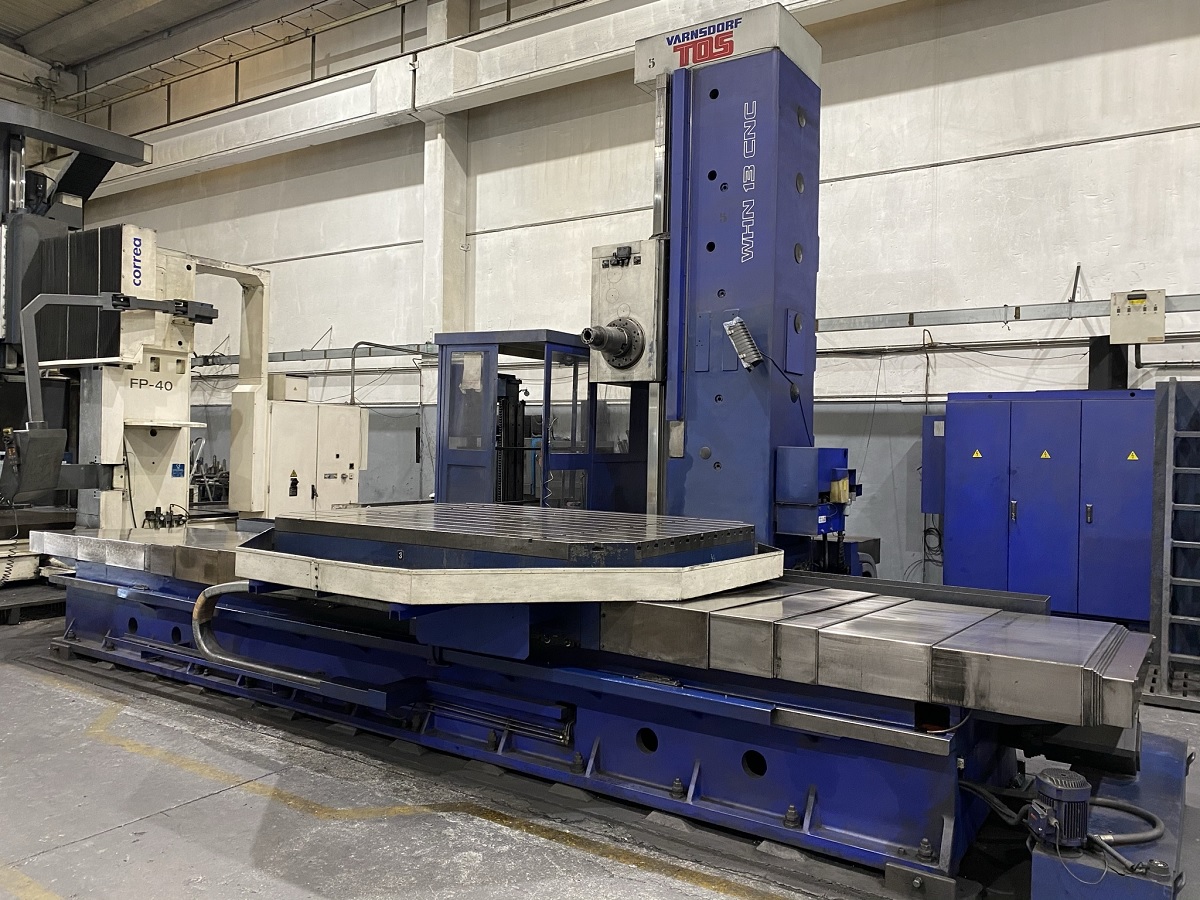

The boring machine, also called boring machine, is a conventional machine tool used to machine cubic shaped parts, with close tolerances and on which you want to achieve quality finishes. How is a boring machine formed? What parts make it up? How does it work?
Functioning of the godmother
For machining cubic parts, the part is placed on the work table while the boring tool is rotated. The tool is attached to the machine’s tool-holder spindle and it is here that the speed necessary for the job is generated. This speed varies depending on the type of material to be machined, as well as the axial feedon the piece. A boring machine has the characteristic that the machining processes that are carried out in it have a high cost. For this reason, it is important to choose the necessary boring tool that allows reducing the time as much as possible and that the machining is of precision and quality.
What is boring? And what is a boring machine? Boring is a type of machining that is carried out on certain pieces in order to achieve greater precision and less roughness on the surface; Parts with cylindrical or conical holes are usually machined. This operation is also practiced to create internal threads.
From the foregoing it follows that the machine capable of carrying out boring work is the boring machine or boring machine. These are very special machines and they must have very low tolerances and precise machining quality. The boring machines have the quality of being able to work in very narrow areas.
How to choose a boring machine?
To choose a boring machine it is necessary to take into account certain parameters such as the limitations of the piece and its designs. The size, the tolerance and the finish that you want to achieve must also be considered. Likewise, it is important to know if the materials of the part are supported by the boring machine; here we study their hardness, the state, the resistance, if it is casting, etc. But not only the part must be analyzed, but also the boring operations that you want to perform on the machine tool: grooving, roughing, >finishing, interior and exterior work.
It is advisable to know the characteristics of each boring operation that is carried out and the parameters on them, such as the cutting speed, the power or the type of drive of the machine. Also, if you want to perform automatic machining, if the machine requires coolant and in what quantities and, of course, the characteristics of the boring-tool.
Types
In addition to the conditions described above, choosing a boring machine depends on the type of machine tool you are looking for. A simple boring operation can be performed on lathes , so if you do not do much of this type of work, it is possible that these will be enough. Otherwise, you can get one of the types of boring machines that exist in the industry.
- For templates. Boring machines for templates have been designed to position and drill templates, calibrators, dies and parts whose machining requires high precision. They resemble vertical milling machines.
- Vertical boring machine. This machine tool is distinguished by turning on a horizontal table.
- Horizontal boring machine. Unlike vertical ones, horizontal boring machines work stationary. They have a horizontal spindle that is attached to one end and a rotating one that operates in the opposite direction.
Parts of the boring machine
Although there are different types of boring machines, as we have already seen, these machines have common elements whose placement and distribution varies depending on the type of machine tool used. . The common elements of a boring machine are the table, the frame, the bed, the spindle, the head and the carriage.
One of the most important elements is the bench, which is the support of the machine and has the characteristic of being robust and stable, since it has to be capable of to dampen the movements and vibrations of the machining. The bed rests on the ground and attached to it is the frame, which has to support the headstock of the machine tool where the spindle is housed. strong>.
In addition, the machine is provided with a vertical column , which is what allows the movement of the motorized head. On the other hand, the boring machine has a piece holder table, a rotating surfaceon which the pieces to be machined are placed. On the other hand, attached to the workpiece table we find the longitudinal carriage. This, in addition to being attached to the table, moves on rails to the bench and allows the movement of the piece horizontally.
The boring machine is also made up of head guides. The head, through the frame rails and through a screw, can move vertically. Lastly, the machine is made up of a main spindle and a spindle for transmitting table feeds.


